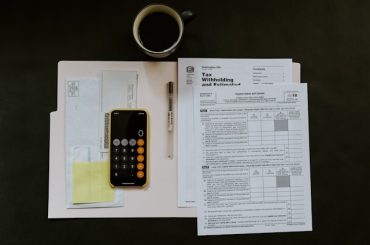Have you ever needed a quick financial boost? Personal Loans can be a lifesaver, whether for emergencies, weddings, or home renovations. But here’s the tricky part: not everyone who applies gets approved. So, what makes a lending institution approve your application? Read on to find out the key factors that determine Personal Loan eligibility.
Step 1: Credit Score
Your credit score is 3-digit, like a mirror reflecting your financial habits. Lending institutions take a long, hard look because it shows how you have managed your financial obligations. A high score can open doors to lower interest rates and better loan terms.
- A score above 750 is typically seen as excellent, increasing your chances of loan approval.
- Regularly checking your credit report for errors and keeping your credit utilization low can help improve your score.
- Ensuring you pay all your bills and existing loan EMIs on time cannot be overstated. Late payments are red flags for lending institutions and can harm your credit score significantly.
- A healthy balance of secured and unsecured loans contributes positively to your credit profile. It demonstrates your ability to manage different types of credit effectively, further boosting your creditworthiness.
Step 2: Income Stability
Lending institutions aren’t just looking at numbers when you apply for a loan. They’re looking for a story that tells them you can repay what you borrow. Steady income from a reputable source gives lending institutions the confidence they need.
- Documented Proof: Whether you’re salaried or self-employed, showcasing your income through documents like salary slips, tax returns, or bank statements is essential. These documents serve as tangible proof of your financial health and earning regularity.
- Consistency Matters: For freelancers and the self-employed, illustrating a stable income stream over the years is crucial. Consistent earnings across multiple years, evidenced through tax returns or bank statements, highlight your ability to sustain and manage your finances effectively.
Step 3: Debt-to-Income Ratio
This ratio compares how much you owe to how much you earn. It helps lending institutions assess if you can handle additional debt. A lower ratio means more of your income is available for new borrowing.
- Keeping your existing debts low can improve your ratio, making you a more attractive candidate for a loan. Actively managing your existing debts to keep this ratio in check is vital.
- Aiming to maintain your debt-to-income ratio below 40% is a good benchmark. It shows lending institutions that you have a healthy portion of your income for new borrowing, enhancing your attractiveness as a borrower.
Step 4: Employment History and Stability
Lending institutions place a high value on consistency – not just in your earnings but in how those earnings have been generated over time. A steady job or consistent work in your field proves reliability.
- Longevity Leads to Leverage: Staying with the same employer for a significant period can positively impact your loan application. It tells lending institutions you’re stable and reliable, traits they highly value.
- Navigating Job Changes: If you’ve changed jobs frequently, be prepared to offer additional proof of income stability. It’s about showing reliability, even in the face of change.
Step 5: Age and Work Experience
The lending world sees age and experience through a bifocal lens. Your age and the length of your work experience can influence your loan eligibility. Lending institutions look for borrowers who are neither close to retirement nor new to the workforce.
- Young Professionals: If you’re early in your career, lending institutions will look for evidence of job stability and a burgeoning financial profile. It’s your chance to showcase your growth potential and financial acumen.
- Seasoned Applicants: For those closer to retirement, the emphasis shifts to demonstrating a robust repayment strategy. Lending institutions want assurance that loans will be repaid fully, making a solid repayment plan essential.
Step 6: Enhancing Your Financial Profile: Beyond the Basics
Improving your Personal Loan eligibility goes beyond meeting the basic requirements.
- Build a Stronger Financial Cushion: An emergency fund or savings that exceed three to six months of expenses can impress lending institutions by showing financial prudence.
- Reduce Your Debts: Paying down debts, especially high-interest credit card debt, can significantly improve your debt-to-income ratio and credit score.
- Seek Financial Advice: Consulting with a financial advisor to streamline your finances and plan for the future can also enhance your loan eligibility.
By taking these steps, you’re improving your chances of loan approval and preparing for a more secure financial future.
By understanding and optimizing these five crucial factors, you can confidently enhance your loan eligibility and walk into the loan application process. Remember, each lending institution has its criteria, so calculate Personal Loan eligibility with these factors in mind, whether you’re aiming for a 1 lakh Personal Loan or more. Constantly monitor your financial health, not just when you need a loan but as a regular habit. This way, when the need arises, you’ll be ready to apply and be approved.
*This is a Sponsored Article









